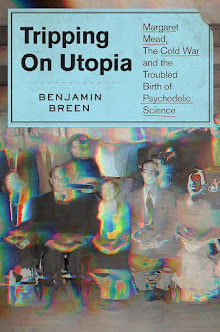"It is the custom of the Dutch to send parties from time to time to explore the country, and those who go furthest are best rewarded. A number of soldiers went in a party with a sergeant who commanded them, and advanced far into the country, where they made a large fire at midnight, both to protect themselves from lions and for warmth, and lay round it to rest. When they were asleep, a lion seized one of the soldiers by the arm, and immediately the sergeant fired a shot and slew the animal. When it was dead its jaws had to be forced open, with great effort, in order to release the soldier's arm, which was pierced from side to side. It is apparent from this story that it is an error to suppose that lions do not approach a fire." -Jean-Baptiste Tavernier, Travels in India, pg. 305.
Don't make the mistake of thinking that a hungry African lion will be scared away by fire. Such was the laconic moral of this rather gruesome story, related by the seasoned French traveler and jewel-merchant Jean-Baptiste Tavernier (1605-1689) in his highly entertaining Les Six Voyages de Jean-Baptiste Tavernier (1676).
Tavernier made his considerable fortune as a jewel merchant for Louis XIV (the illustration at left is a typical example of the contents of his book - he was obsessed with enormous stones such as the Hope Diamond, which he once owned and dubbed le Tavernier), but he was also a highly perceptive observer and competent writer, which makes his printed work one of the most valuable resources for those interested in the countries of the Indian Ocean region (especially modern-day India, Pakistan, Myanmar and South Africa) in the seventeenth century. Below are some particularly interesting descriptions of Tavernier's experiences accompanying one of the earliest Dutch colonizing missions to South Africa. Here, with the disdain for Africans typical of a European of his time, he describes the 'Hottentots' or 'Cafres' who were indigenous to the region around the Cape of Good Hope (I posted two weeks ago about a contemporary French map depicting the same peoples -- see here):
"On the fifty-fifth day of our voyage we came in view of the Cape of Good Hope... When [the Cafres or Hottentots] speak they make the tongue click (peter) in the mouth, and although their voice is scarcely articulate they easily understand one another... When they see vessels arriving they drive cattle to the shore and bring what they have to barter for tobacco, spirits, and beads of crystal and agate, which are cheap at Surat... "
Tavernier also displayed a common curiosity about the blackness of African skin -- how could the inhabitants of a temperate region like the Cape be so dark-complected? He concludes that it was due to an ointment made of "different simples" - an early modern term for the active agent in drugs and medicines:
"It is a very good country, as I have said, at the 35th degree and some minutes of latitude, and it is neither the air nor the heat which makes these Cafres so black as they are. Desiring to know the explanation of it, and why they smell so strongly, I inquired from a young girl who was taken as soon as her mother had brought her forth, and was nursed and reared in the fort, being as white as one of our European women. She told me that the reason that the Cafres are so black, is that they rub themselves with an ointment which they make of different simples known to them, and that if they do not rub themselves often, and as soon as they are born, they become dropsical."
Indeed, it was this knowledge of drugs and "simples" that struck Tavernier as the special gift of the otherwise barbarous natives of the Cape (for more on early modern drugs and drug merchants, see my earlier posts here and here):
"It is true that these Cafres, brutal as they are, have nevertheless a special knowledge of simples, and know to apply them to the maladies for which they are specifics; this the Dutch have very often proved. Whether the Cafres are bitten by a venemous animal, or that an ulcer or other disease appears, by means of these simples, which they know how to select, they accomplish the cure in a short time. Each sick man [of the Dutch ship] had two of these Cafres to attend upon him, and as soon as they saw what the condition of the wound or ulcer was, they sought for the drugs, crushed them between two pebbles and applied them to the sore. As for the four others, they were not given into their hands, being so infected with veneral disease that they could not be cured at Batavia. All four died between the Cape and the Island of St. Helena..."
An elderly Tavernier in elaborate Persian dress, posing proudly after he had made his fortune and settled into retired life in France.
The complete illustrations from Tavernier's Voyages are available for free online thanks to the French Bibliotheque Nacional. Some samples:
"Animal which produces musk" -- a greatly treasured commodity/drogue in early modern times, used as a medicine and perfume (as, indeed, it still is today).
Tavernier calls this an "Indian poignard." It is in fact a katara, a weapon used in the Indian subcontinent since ancient times for close-quarters combat and assasinations.








No comments:
Post a Comment